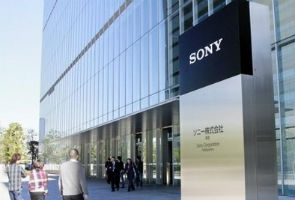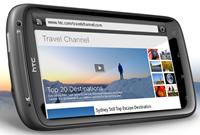The Android army is on the march and they're gunning for Apple. Not content with bringing the fight to the iPhone, devices based on Google's slick software have the iPad in their sights too.
What was once a trickle is now a flood, as Android tablets of all shapes and sizes arrive in numbers.
This week's bounty includes the 10-inch Motorola Xoom, once considered the leading contender for the iPad crown, and the HTC Flyer, a quirky seven-inch tablet with an optional stylus.
Delays in bringing the Xoom to market have meant it's not the first device to use the latest version of Android -- codenamed Honeycomb -- which has been optimised for tablets instead of phones. That honour went last month to Samsung's capable Galaxy Tab 10.1V.
But the nearly identical Xoom still packs a punch that makes it worthy of consideration as an iPad alternative.
Boasting a bigger, higher-resolution screen, the ability to play Flash video and, uniquely, a USB port to connect keyboards, cameras, etc, the Motorola reaches parts the iPad cannot.
Yet that's not the whole story, with the iPad winning out on battery life, software and weight.
The Xoom's poorly positioned power and volume buttons, for instance, are classic examples of ill-considered design.
More importantly, Honeycomb is anything but the finished article, lacking some polish and a broad range of tablet apps.
Available only through O2 in just one flavour (32GB with WiFi/3G), the Xoom has been sensibly priced at €630 -- €70 below the equivalent iPad.
It doesn't set the world alight the way many had expected and it's very similar to the Galaxy Tab 10.1V. But it shows Apple can't rest on its laurels yet.
HTC obviously took one look at the crowded tablet market and decided it needed something to stand out. Perhaps a stylus wasn't exactly the best answer but the Flyer is in a niche all by itself. The tablet's small size has its advantages for portability while not materially affecting usability.
Even the older version of Android on board doesn't matter much.
Thankfully, the stylus is not required for normal operations such as launching applications, tapping or typing -- in fact it can't be used for those at all, bizarrely. Instead, it enables you to scribble notes, draw pictures or make annotations. Most people will find it entirely pointless.
But what will really prevent the Flyer from breaking out of its little ghetto is the cost. Exclusive to the Carphone Warehouse, the 32GB WiFi/3G version retails for €680.
Sorry, HTC, for a seven-inch tablet, that ain't gonna fly.
Game On
Legend of Zelda: Ocarina of Time 3D
NINTENDO 3DS
RATING: 9.5/10
Nostalgia plays funny tricks with the mind. Revisiting fond memories often ends in disappointment. So it's with a wary eye that we approach this 3D remake of one of the most highly decorated games of all time.
Ocarina of Time had a classic Nintendo design, full of fiendish puzzles, playful characters and dexterous juxtaposition of sunny moments with sudden darkness as evil descends.
But surely it can't hold up 13 years later on a handheld console, slathered in 3D, the effect-du-jour? Surprisingly, the answer is an unqualified yes.
Nintendo has carefully recreated the charming original and tweaked it subtly to appeal to a new audience.
Crisp visuals, clever 3D and smart use of the touchscreen and gyroscope enhance the entertaining adventure.
Perhaps the opening sequence, which acts as an extended tutorial, outstays its welcome and some dungeons still err on the side of frustrating, but Ocarina of Time will introduce a whole new generation to the joys of Zelda.
Infamous 2
PS3
RATING: 8.5/10
If I had a penny for every time I wished bolts of electricity could shoot from my fingertips . . . Oh well, there's always Infamous 2, which heralds the return of troubled anti-hero Cole MacGrath who eats electrons for breakfast.
MacGrath faces a new threat in a post-apocalyptic southern US city overrun by anarchists, and only his electrical superpowers can save the day.
Much like the first game, it plays out like the lovechild of Assassin's Creed and Crackdown, with Cole effortlessly scaling tall buildings before jumping to the ground to kick some anarchist ass.
This sequel has been lavished with attention, from the gorgeous graphics to the host of side-missions, some of which can be created by the players themselves.
Dungeons & Dragons: Daggerdale
X360/PS3
RATING: 6/10
A dungeon crawler in the Diablo mould, Daggerdale looks and plays as if it came from central casting. All the clichés are present and correct -- goblins, endless loot and grumpy dwarves.
With precious little personality to call its own, only the four-player co-op mode makes it worth a download.
Bits and Bytes
Meteor gets iPhone4
> Meteor and its sister firm eMobile have become the last of the big networks to begin stocking the iPhone 4 -- but don't forget the iPhone 5 is just a couple of months away.
The plans look reasonably attractive but bear in mind, Meteor's 3G network is not nearly as extensive of that of its rivals.
www.meteor.ie
www.emobile.ie
New pollen alert app
> Hayfever sufferers can download a new Irish app (for iPhone and Android) that alerts them to high pollen levels in the air. Find Pollen Alert in your phone's specific app store.
EA online game store
> Games giant EA has launched its own online store where you can download the latest titles for the PC.
The site, called Origin, already stocks more than 150 games for direct download.








 "In our opinion, this is just the beginning of Android's share loss in the U.S.," Needham & Co. analyst Charlie Wolf wrote in an investors note obtained by
"In our opinion, this is just the beginning of Android's share loss in the U.S.," Needham & Co. analyst Charlie Wolf wrote in an investors note obtained by 
 The HTC Sensation which comes with a 4.3-inch qHD display having a resolution of 960 x 540, and is powered by a 1.2 GHz dual-core processor running Android 2.3 Gignerbread. The device also includes an 8 Mp rear camera with dual-LED flash, capable of recording at 1080p HD. It features 768MB of RAM and 1GB internal storage for applications.
The HTC Sensation which comes with a 4.3-inch qHD display having a resolution of 960 x 540, and is powered by a 1.2 GHz dual-core processor running Android 2.3 Gignerbread. The device also includes an 8 Mp rear camera with dual-LED flash, capable of recording at 1080p HD. It features 768MB of RAM and 1GB internal storage for applications. 





